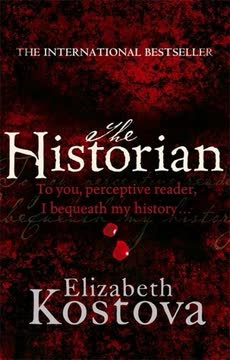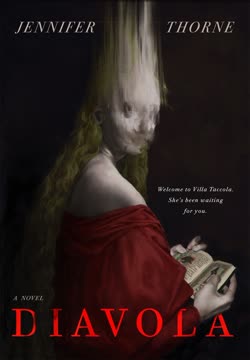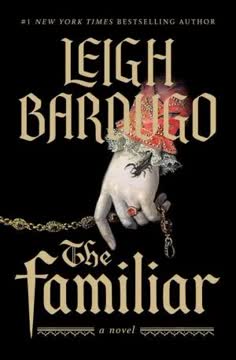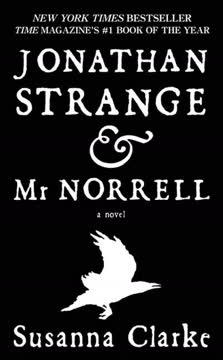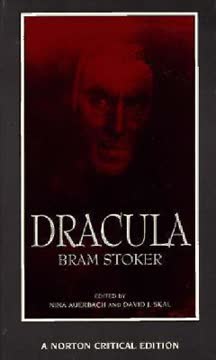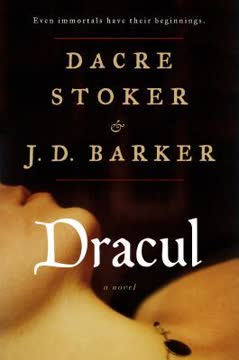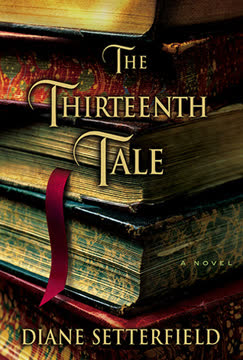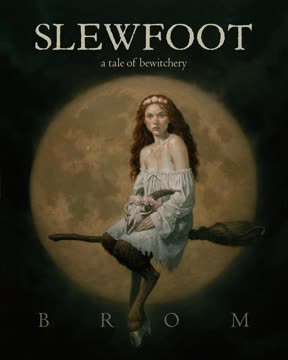Plot Summary
A Mysterious Book's Dark Secret
In 1972, a sixteen-year-old girl stumbles upon a mysterious book in her father's library, marked with a dragon and the word "Drakulya." Her father, Paul, a historian, is hesitant to discuss it, but the book's presence hints at a dark secret. This discovery leads Paul to recount the tale of his mentor, Professor Rossi, who vanished after receiving a similar book. Rossi's letters reveal his belief that Dracula is real and still alive, a discovery that led to his disappearance. The girl is drawn into a world of historical intrigue and supernatural danger, setting the stage for a journey that intertwines history and legend.
A Father's Hidden Past Revealed
Paul shares his own experiences with the mysterious book and his mentor's disappearance. He recounts how Rossi's research into Dracula led to encounters with sinister figures and unexplained events. Haunted by the fear that history's dark secrets are reaching into the present, Paul travels with his daughter, struggling to protect her from the dangers he once faced. Their journey through Europe becomes a tapestry where history and legend intertwine, revealing the depth of Dracula's influence and the perilous nature of their quest.
The Scholar's Dangerous Obsession
Rossi's letters detail his obsessive quest to uncover the truth about Dracula. He describes finding maps and documents in Istanbul that suggest Dracula's tomb is hidden in an unknown location. Despite a mysterious bureaucrat confiscating his maps, Rossi continues his investigation, driven by a need to understand the dark forces at play. His letters serve as a warning to his successor, urging caution in the face of evil. This obsession becomes a catalyst for the narrative, propelling the characters into a world where history and the supernatural collide.
A Daughter's Unexpected Discovery
The girl learns that her father had a relationship with a woman in Romania, resulting in a daughter, Helen, who is now an academic rival. Helen is determined to surpass her father's research on Dracula, unaware of the danger it poses. The girl and Helen form an uneasy alliance, united by their connection to Paul and their shared interest in Dracula. As they delve deeper into the mystery, they uncover secrets that threaten their lives and challenge their understanding of history, forging a bond that is both fragile and essential.
The Hunt for Dracula Begins
The girl and Helen embark on a quest to find Dracula's tomb, guided by Rossi's letters and maps. They travel through Europe, following clues that lead them to ancient monasteries and forgotten archives. Along the way, they encounter scholars and historians drawn into the same dark mystery. The journey is fraught with danger, as they are pursued by those who wish to keep Dracula's secrets hidden. The search for the tomb becomes a race against time, as they seek to uncover the truth before it is too late, driven by a shared determination to confront the darkness.
Secrets of the Unholy Tomb
The maps and documents suggest that Dracula's tomb is hidden in a remote region, protected by ancient curses and guarded by those who serve him. The girl and Helen must decipher the clues and navigate the treacherous landscape to reach the tomb. As they draw closer, they encounter supernatural forces that test their courage and resolve. The tomb holds the key to understanding Dracula's power and the legacy of fear he has left behind. The quest becomes a battle between light and darkness, with the fate of history hanging in the balance.
A Perilous Alliance Forms
The girl and Helen realize that they must work together to defeat the forces that threaten them. Their alliance is tested by mistrust and conflicting motives, but they are united by their desire to protect their loved ones and uncover the truth. As they confront the dangers of the past, they learn to rely on each other's strengths and knowledge. The journey becomes a test of their loyalty and courage, as they face the ultimate challenge: confronting Dracula himself and ending his reign of terror.
A Scholar's Unexpected Revelation
In Budapest, Paul meets Hugh James, an English historian who shares a startling connection: both have encountered mysterious books marked with a dragon. Hugh's research into vampire folklore uncovers a link to Dracula, suggesting that ancient Greek beliefs about spirits in amphorae might relate to vampiric legends. This revelation deepens the mystery surrounding Dracula's historical presence and hints at a broader, more sinister narrative. Paul's encounter with Hugh underscores the pervasive reach of Dracula's legend and the scholarly obsession it incites.
A Dangerous Journey to Istanbul
Paul and Helen travel to Istanbul, driven by the hope of uncovering clues about Dracula's tomb. Their journey is fraught with tension, as they navigate a city steeped in history and mystery. They meet Turgut Bora, a Shakespearean scholar with a peculiar interest in vampires, who becomes an unexpected ally. Turgut's knowledge of Istanbul's archives and his own encounters with the supernatural provide Paul and Helen with new insights, but also place them in greater danger as they delve deeper into the city's secrets.
Secrets of the Ottoman Archive
In Istanbul, Paul and Helen explore an archive linked to Sultan Mehmed II, uncovering documents that suggest Dracula's influence extended into the Ottoman Empire. They learn of a mysterious letter referencing disturbances at Dracula's grave in Snagov, hinting at a connection between Istanbul and Dracula's final resting place. The archive's secrets deepen the enigma of Dracula's historical presence, suggesting that his legacy of fear and power may have been more widespread than previously believed.
A Mysterious Encounter in Budapest
In Budapest, Paul and Helen are hosted by Helen's aunt, Éva, a formidable figure in the Hungarian government. Éva's hospitality is warm, yet her political acumen and connections hint at deeper layers of intrigue. As Paul navigates the complexities of Hungarian politics and history, he senses that Éva's influence may be crucial in their quest. Her enigmatic presence adds a layer of tension to their mission, as Paul and Helen seek to uncover the truth about Dracula's legacy.
A Hidden Letter's Revelation
In Istanbul, Turgut Bora and Selim Aksoy uncover a letter from 1477, written by a monk named Kiril, which hints at a secret mission involving Dracula's remains. The letter suggests that the monks from Snagov traveled to Bulgaria, carrying a mysterious treasure. This revelation ignites hope in Paul and Helen, who are determined to follow the trail. The letter's connection to the past and its implications for Dracula's legacy become a focal point in their quest, suggesting that the truth about Dracula's final resting place might lie in Bulgaria.
A Dangerous Journey to Bulgaria
Paul and Helen travel to Bulgaria, guided by the hope of uncovering Dracula's tomb. Their journey is fraught with tension, as they navigate a country under Soviet influence. They are assigned a guide, Krassimir Ranov, whose presence is both a help and a hindrance. Despite the challenges, they are determined to meet Anton Stoichev, a historian who might hold the key to their search. The journey tests their resolve and deepens their understanding of the historical and political complexities surrounding Dracula's legend.
The Scholar's Secret Society
Turgut reveals to Paul and Helen that he and Selim are part of the Crescent Guard, a secret society formed by Sultan Mehmed II to combat the Order of the Dragon. This revelation adds a new layer to their quest, as they realize they are part of a centuries-old struggle against Dracula's legacy. The Crescent Guard's mission to protect the Ottoman Empire from Dracula's influence underscores the historical depth of their journey and the stakes involved in uncovering the truth.
Dracula's Final Confrontation Approaches
As the search for Dracula's tomb intensifies, the protagonists find themselves in a perilous confrontation with the undead prince. Dracula, aware of their pursuit, uses his supernatural powers to evade capture. The tension mounts as the characters face their fears and confront the embodiment of evil. The battle between light and darkness reaches its peak, with the fate of history hanging in the balance. The characters must rely on their courage and knowledge to defeat Dracula and end his legacy of fear.
Characters
Paul
Paul is a historian who has spent years researching Dracula, a pursuit that has brought danger to his life. He is protective of his daughter and struggles with the fear that his past will harm her. Paul's knowledge of history and his experiences with the supernatural make him a key figure in the quest to uncover Dracula's secrets. His relationship with his daughter is central to the story, as he seeks to protect her while confronting the darkness of his own past.
The Narrator
The narrator is a sixteen-year-old girl who discovers a mysterious book in her father's library. Her curiosity leads her to uncover her father's hidden past and the dangers that come with it. She is intelligent and resourceful, determined to understand the truth about Dracula and protect her father. Her journey is one of self-discovery, as she learns about her family's history and the dark forces that threaten them.
Professor Rossi
Rossi is a historian whose research into Dracula leads to his disappearance. His letters reveal his belief that Dracula is real and still alive, a discovery that puts him in danger. Rossi's obsession with uncovering the truth drives the narrative, as his letters guide the characters on their quest. He is a tragic figure, whose pursuit of knowledge leads to his downfall.
Helen Rossi
Helen is the daughter of Paul and a Romanian woman, determined to surpass her father's research on Dracula. She is intelligent and ambitious, driven by a desire to prove herself and uncover the truth about her father. Her relationship with the narrator is complex, as they form an uneasy alliance in their quest. Helen's knowledge of vampire lore and her connection to Paul make her a key figure in the story.
The Librarian
The librarian is a mysterious character who appears to be connected to the dark forces surrounding Dracula. His actions suggest that he is working to keep Dracula's secrets hidden, and he poses a threat to the characters. The librarian's true motives and identity are shrouded in mystery, adding to the suspense and danger of the narrative.
Hugh James
Hugh James is an English historian whose research into vampire folklore intersects with Paul's quest. His discovery of a book similar to Paul's suggests a broader conspiracy surrounding Dracula's legend. Hugh's enthusiasm and scholarly curiosity make him a valuable ally, but his involvement also complicates the narrative, as his findings hint at deeper, more sinister connections.
Turgut Bora
Turgut Bora is a member of the Crescent Guard, a secret society dedicated to combating the Order of the Dragon. His knowledge of Ottoman history and his connections to the supernatural elements of Dracula's legend make him an invaluable ally to Paul and Helen. Turgut's dedication to the Guard's mission and his willingness to share its secrets underscore the historical depth and stakes of the quest.
Éva Orbán
Éva Orbán is Helen's aunt, a powerful figure in the Hungarian government. Her hospitality and political acumen provide Paul and Helen with crucial support in Budapest. Éva's complex history and connections add intrigue to the narrative, as her influence becomes a key factor in their quest. Her character embodies resilience and resourcefulness, reflecting the broader themes of survival and legacy.
Anton Stoichev
Anton Stoichev is a Bulgarian historian who holds crucial information about the monks' journey from Snagov. His knowledge of medieval Balkan history and his possession of a manuscript detailing the monks' travels make him a key figure in Paul and Helen's quest. Stoichev's willingness to share his knowledge and his understanding of the historical and spiritual significance of Dracula's legacy provide valuable insights into the mystery they are trying to solve.
Krassimir Ranov
Krassimir Ranov is assigned as Paul and Helen's guide in Bulgaria. His presence is both a help and a hindrance, as he is connected to the Bulgarian government and has his own agenda. Ranov's knowledge of the country and its history is valuable, but his true motives remain unclear, adding tension and uncertainty to the journey.
Plot Devices
Rossi's Letters
Rossi's letters serve as a key plot device, providing insight into his research and the dangers he faced. They guide the characters on their quest to uncover Dracula's secrets, revealing the connections between history and the supernatural. The letters create suspense and tension, as they hint at the dark forces at play and the risks involved in pursuing the truth.
The Mysterious Book
The book discovered by the narrator is central to the plot, as it contains clues to Dracula's tomb and the dangers that come with it. The book's mysterious origins and the dragon emblem on its cover suggest a connection to Dracula's legend. It serves as a catalyst for the characters' journey, driving them to uncover the truth and confront the darkness of history.
The Unholy Tomb
The search for Dracula's tomb is a central plot device, as it represents the ultimate goal of the characters' quest. The tomb is shrouded in mystery and protected by ancient curses, adding to the suspense and danger of the narrative. The characters must decipher clues and navigate treacherous landscapes to reach the tomb, where they hope to uncover the truth about Dracula's power and legacy.
The Crescent Guard
The Crescent Guard is a secret society formed by Sultan Mehmed II to combat the Order of the Dragon. Its mission to protect the Ottoman Empire from Dracula's influence adds a historical depth to the quest and underscores the stakes involved in uncovering the truth. The Guard's existence and its connection to Turgut and Selim provide a new layer of intrigue and complexity to the narrative.
Brother Kiril's Letters
The letters written by Brother Kiril provide crucial insights into the monks' journey from Snagov to Bulgaria. They reveal the historical and spiritual significance of Dracula's legacy and suggest that the truth about his final resting place is intertwined with the history of the Bulgarian monasteries. The letters serve as a key plot device, guiding Paul and Helen's quest and deepening the mystery they are trying to solve.
Analysis
"The Historian" by Elizabeth Kostova is a rich tapestry that weaves together history, legend, and the supernatural. The novel explores the enduring fascination with Dracula, blending historical research with a thrilling narrative that spans generations. Through its complex characters and intricate plot, the book delves into themes of obsession, legacy, and the struggle between good and evil. Kostova's work challenges readers to consider the power of history and the impact of the past on the present. The novel's exploration of the human spirit's resilience in the face of darkness offers a poignant reflection on the enduring battle between light and shadow, leaving readers with a sense of hope and renewal.
Last updated:
FAQ
Synopsis & Basic Details
What is The Historian about?
- A Multi-Generational Quest: The Historian follows a young woman's journey in 1972 to uncover the truth behind her diplomat father's mysterious past and the disappearance of his academic mentor, Professor Rossi, both linked to the legend of Vlad the Impaler, or Dracula. The narrative weaves through three timelines: the narrator's present, her father's 1950s quest, and Rossi's 1930s investigation, all converging on the enduring, terrifying reality of Dracula.
- Blending History and Horror: The novel masterfully intertwines meticulous historical research with gothic horror, exploring the origins of the Dracula myth beyond Bram Stoker's fiction. It delves into the real Vlad Tepes, the Ottoman Empire, Byzantine history, and Eastern European folklore, suggesting that the vampire legend is not merely superstition but a persistent, living evil.
- The Price of Knowledge: At its core, the story is a meditation on the dangers and allure of delving into forgotten histories. Characters are drawn into a perilous academic pursuit that exacts a heavy personal toll, forcing them to confront not only ancient evils but also the sacrifices made in the name of truth and survival.
Why should I read The Historian?
- Immersive Historical Atmosphere: Elizabeth Kostova crafts a deeply atmospheric journey through mid-20th century Europe, from the quiet canals of Amsterdam to the bustling bazaars of Istanbul and the ancient monasteries of Bulgaria. The vivid descriptions of landscapes, architecture, and cultural nuances transport readers directly into the heart of the story's diverse settings.
- Intellectual Thriller with Depth: Beyond the suspenseful hunt for Dracula, the novel offers a rich intellectual exploration of history, academia, and the nature of evil. It challenges readers to question the boundaries between fact and legend, and to consider how historical narratives are shaped, preserved, and sometimes suppressed.
- Complex Character Journeys: The story features compelling characters driven by a mix of scholarly ambition, familial loyalty, and personal vendetta. Their emotional arcs, particularly the narrator's coming-of-age amidst danger and her father's poignant sacrifices, provide a powerful human core to the supernatural mystery, making their struggles deeply resonant.
What is the background of The Historian?
- Epistolary Narrative Structure: The novel employs a layered epistolary style, primarily through the narrator recounting her father's story, which itself is often told through Professor Rossi's letters. This structure creates a sense of authenticity and immediacy, as if the reader is piecing together a real historical puzzle from primary sources.
- Author's Personal Inspiration: Elizabeth Kostova's dedication "For my father, who first told me some of these stories" hints at a personal connection to the themes of inherited history and storytelling. The author's note further reveals her intention to explore how "history itself reaches inexorably forward for us with its shadowy claw," grounding the fantastical elements in a profound sense of historical consequence.
- Intertextual Dialogue with Dracula Lore: The book explicitly engages with Bram Stoker's Dracula, acknowledging its influence while simultaneously seeking to uncover a "real" Dracula. This meta-narrative approach invites readers familiar with vampire fiction to reconsider the genre's foundations and the historical figures that inspired it, adding layers of literary and historical context.
What are the most memorable quotes in The Historian?
- "Not everyone who reaches back into history can survive it.": This opening line from the narrator's note (Document 1, A Note to the Reader) immediately establishes the novel's central theme: the perilous nature of historical inquiry. It foreshadows the personal costs and dangers faced by those who delve too deeply into the past, setting a somber tone for the entire narrative.
- "History has taught us that the nature of man is evil, sublimely so. Good is not perfectible, but evil is.": Uttered by Dracula himself to Professor Rossi (Document 1, Chapter 72), this chilling quote encapsulates the antagonist's nihilistic philosophy and his belief in the enduring, perfectible nature of evil. It serves as a stark counterpoint to the human characters' pursuit of truth and goodness, highlighting the profound ideological conflict at the story's heart.
- "I would die for him.": The narrator's father, Paul, declares this to Helen Rossi (Document 1, Chapter 43) when asked if he loves Professor Rossi. This powerful statement reveals the depth of his loyalty and affection for his mentor, underscoring the profound personal bonds that drive the characters' dangerous quest, transcending mere academic interest.
What writing style, narrative choices, and literary techniques does Elizabeth Kostova use?
- Layered Epistolary Structure: Kostova employs a complex narrative framework where the primary narrator (the daughter) recounts her father's story, which itself is often told through his mentor Rossi's letters. This creates a sense of historical excavation, with each layer revealing more of the past, enhancing the mystery and the feeling of piecing together fragmented truths.
- Atmospheric and Sensory Prose: The author uses rich, evocative language to build a palpable sense of place and mood. Descriptions often appeal to multiple senses, such as "the smell of age that rose from it" (the mysterious book, Chapter 1) or the "dank smell that could have been coal smoke or diesel fuel" (Istanbul, Chapter 29), immersing the reader in the historical settings and heightening the gothic atmosphere.
- Subtle Foreshadowing and Symbolism: Kostova masterfully weaves in subtle clues and recurring symbols, like the dragon motif, the recurring image of the unholy tomb, and the motif of "amnesia." These elements often appear innocuously before gaining sinister significance, creating a pervasive sense of dread and hinting at deeper connections that reward careful reading.
Hidden Details & Subtle Connections
What are some minor details that add significant meaning?
- The Librarian's Worn Fingerprints: The Amsterdam police note that the librarian's handprint "had too few lines" (Chapter 60), a subtle detail that hints at his ancient, non-human nature. This seemingly forensic observation subtly reinforces the supernatural elements, suggesting a being whose physical form has been altered or worn down by centuries of existence, rather than a mere human.
- The "Amnesia" Drink in Crete: Rossi recounts being given a local drink called "amnesia" in Crete (Chapter 9), after which he forgot his Romanian experiences. This seemingly whimsical detail later becomes a crucial explanation for his denial of Helen's mother and his past in Romania, revealing a deliberate, supernatural intervention rather than a simple lapse of memory or callous abandonment.
- The Dragon's Tail as a River: Rossi's realization that the dragon woodcut's tail on the mysterious book corresponds to a river on the maps (Chapter 12) is a pivotal moment. This detail transforms a decorative element into a functional cartographic clue, symbolizing how ancient symbols hold hidden, practical knowledge for those initiated into the deeper mysteries of Dracula's world.
What are some subtle foreshadowing and callbacks?
- The "Next One" Envelope: Rossi labels his final packet of letters "SAVE FOR NEXT ONE" (Chapter 6). This phrase subtly foreshadows the narrator's father becoming the next in line to pursue the dangerous research, and later, the narrator herself. It implies a predetermined, almost fated succession in the hunt for Dracula, linking generations of scholars to the same perilous quest.
- Hugh James's "Ghost in the Amphora": Hugh James's research on "The Ghost in the Amphora" (Chapter 40), initially a seemingly unrelated academic pursuit, directly connects to the ancient Greek belief in vampires and the idea of a spirit trapped within a vessel. This callback to classical antiquity broadens the scope of vampire lore beyond Eastern Europe, suggesting a universal, ancient evil.
- The Monastery's "Monster Equal to the Saint": Brother Kiril's letter mentions a monastery where "the monster equal to the saint" is a sign (Chapter 61). This cryptic phrase foreshadows the discovery of the icon depicting Saint George and the Dragon, where the dragon is presented with an almost equal, if not superior, dramatic presence, hinting at a heretical veneration of Dracula himself within a sacred space.
What are some unexpected character connections?
- The Librarian's Shared Affliction: The librarian in Amsterdam, who attacks the narrator's father and later Helen, is revealed to have the same neck wounds as the Turkish bureaucrat Rossi encountered (Chapter 16). This unexpected connection confirms the existence of a network of Dracula's corrupted servants, extending across time and geography, and highlights the pervasive reach of the vampire's influence.
- Turgut Bora's Crescent Guard Lineage: Turgut Bora, the Istanbul scholar, is not just an academic but a hereditary member of the Crescent Guard, a secret society founded by Sultan Mehmed II to hunt Dracula (Chapter 51). This reveals a deep, ancestral connection to the very entity they are pursuing, transforming a seemingly coincidental alliance into a fated, centuries-old struggle.
- Helen Rossi's Ancestral Mark: Helen's mother reveals that a small dragon mark is imprinted on one child in every generation of her father's family (Chapter 44). This detail unexpectedly links Helen directly to the Order of the Dragon, and by extension, to Vlad Dracula himself, suggesting a genetic inheritance of the "dragon's blood" that makes her both a target and a formidable adversary.
Who are the most significant supporting characters?
- Velior Georgescu, the Gypsy Archaeologist: Georgescu (Chapter 45) is crucial for his unique blend of academic rigor and Romany folklore. His Scottish-Gypsy heritage allows him to bridge the gap between scientific archaeology and local superstitions, providing invaluable insights into Dracula's historical sites and the cultural beliefs surrounding them, which pure academics might dismiss.
- Anton Stoichev, the Exiled Scholar: Stoichev (Chapter 55) is a Bulgarian historian whose personal exile and deep knowledge of medieval Balkan monasteries prove vital. His possession of Brother Kiril's letters and his ability to interpret their hidden meanings, despite political suppression, make him a key figure in unraveling Dracula's final resting place and the heretical beliefs surrounding it.
- Éva Orbán, the Political Strategist: Helen's aunt, Éva (Chapter 39), is a powerful figure in the Hungarian Ministry of the Interior. Her political savvy and network of contacts are instrumental in securing visas and navigating the bureaucratic obstacles of the Iron Curtain, demonstrating how even in a supernatural quest, real-world political power and influence are indispensable.
Psychological, Emotional, & Relational Analysis
What are some unspoken motivations of the characters?
- Paul's Atonement for Rossi: Paul's relentless pursuit of Dracula is driven not just by loyalty to Rossi, but by a profound sense of guilt and responsibility. He feels culpable for having brought the mysterious book to Rossi, triggering his disappearance, and views the quest as a form of atonement, a desperate attempt to "rescue" his mentor from a fate he inadvertently initiated (Chapter 73).
- Helen's Quest for Identity and Validation: Beyond academic ambition and revenge, Helen's pursuit of Dracula and her father is a deep-seated search for her own identity and validation. Her "personal vendetta against Rossi" (Chapter 28) stems from his abandonment of her mother, making her quest a way to reclaim her heritage and force her father to acknowledge her existence and worth.
- Dracula's Desire for a Successor: Dracula's motivation to keep Rossi alive and later to capture him is not merely sadistic, but a desire for an intellectual heir. He seeks a scholar of "unparalleled sense and imagination" (Chapter 72) to catalogue his vast library and continue his work, revealing a profound loneliness and a need for intellectual companionship in his eternal existence.
What psychological complexities do the characters exhibit?
- Paul's Suppressed Trauma and Fear: Paul, despite his outward composure as a diplomat, carries deep psychological scars from his past encounters with the supernatural. His "pattern of fear" (Chapter 2) and his reluctance to share the full story with his daughter reveal a man grappling with trauma, trying to protect his loved ones by shielding them from horrors that have profoundly affected his own sanity and peace of mind.
- Helen's Cynicism as a Defense Mechanism: Helen's "guarded and cynical face" (Chapter 25) and her "bitter smile" are not merely personality traits but a psychological defense mechanism forged by a life of abandonment and political oppression. Her sharp wit and intellectual detachment serve to protect her from emotional vulnerability, especially concerning her father and the painful truths of her heritage.
- Rossi's Intellectual Hubris and Despair: Professor Rossi, initially driven by scholarly bravado, descends into a complex state of intellectual hubris and eventual despair. His belief that he could "look history in the eye and say, 'I know who you are'" (Chapter 2) leads him to underestimate the supernatural, culminating in his capture and the agonizing realization that his pursuit of knowledge has led to his own undoing and the endangerment of others.
What are the major emotional turning points?
- The Narrator's Discovery of Rossi's Letters: The moment the narrator reads Rossi's opening line, "My dear and unfortunate successor" (Chapter 6), marks a profound emotional shift. It transforms her from a sheltered teenager into an active participant in a dangerous, inherited quest, igniting a mix of fear, curiosity, and a burgeoning sense of responsibility.
- Paul's Realization of Helen's Identity: When Paul discovers Helen Rossi is his daughter (Chapter 17), it's a deeply emotional turning point. His initial shock and guilt over his past actions, followed by his growing affection and protective instincts towards her, reshape his motivations and deepen the personal stakes of the entire journey.
- Helen's Acceptance of Paul's Love: Helen's decision to marry Paul (Chapter 62), despite her initial cynicism and the dangers they face, signifies a powerful emotional breakthrough. It represents her acceptance of love and connection, moving beyond her past resentments and finding a new purpose in shared vulnerability and mutual protection.
How do relationship dynamics evolve?
- Father-Daughter Bond Forged in Crisis: The relationship between the narrator and her father evolves from a somewhat distant, protective dynamic to one of deep mutual trust and shared purpose. The father's initial reluctance to involve his daughter gives way to a reliance on her intelligence and courage, while the daughter's youthful obedience transforms into fierce loyalty and active participation in his perilous quest.
- Helen and Paul's Unlikely Partnership: Helen and Paul's relationship begins with antagonism and suspicion, fueled by Helen's resentment over her father's abandonment. However, their shared danger and common goal gradually forge an unbreakable bond of love and partnership, transcending their initial familial and academic conflicts. Their journey together is a testament to healing and forgiveness.
- The Shifting Alliances of Scholars: The relationships between the scholars—Rossi, Paul, Helen, Hugh James, Turgut Bora, Anton Stoichev—evolve from academic rivalry and cautious collaboration to deep trust and mutual reliance. Initially driven by individual research, they form a collective front against a common, supernatural enemy, demonstrating the power of shared knowledge and human connection against overwhelming evil.
Interpretation & Debate
Which parts of the story remain ambiguous or open-ended?
- Dracula's Ultimate Fate and Location: While the protagonists believe they destroy Dracula at Sveti Georgi, the narrative leaves his ultimate fate ambiguous. The empty sarcophagus and the "trickling of dry earth" (Chapter 72) suggest an escape, and Turgut later admits he "cannot guess" where Dracula went (Chapter 75). This open ending implies that Dracula, as an embodiment of evil, may be unkillable, merely relocating to continue his influence.
- The Nature of Helen's "Contamination": Helen is bitten twice by Dracula's minions, and the narrative frequently alludes to her "contamination" and the possibility of her becoming undead. While she claims to be "alive, not undead" (Chapter 79) at the end, her later wasting illness and Paul's fear of her "drifting from us at times" (Epilogue) leave her long-term fate and the true extent of Dracula's mark on her open to interpretation.
- The Role of Divine vs. Supernatural Intervention: The story often blurs the lines between religious belief, superstition, and actual supernatural events. Characters like the monks and Baba Yanka attribute events to God or saints, while the scholars seek rational or occult explanations. The efficacy of crucifixes and holy water is shown, but the ultimate source of Dracula's power and the means of his destruction remain somewhat mysterious, leaving readers to ponder the interplay of faith and the fantastic.
What are some debatable, controversial scenes or moments in The Historian?
- Rossi's Abandonment of Helen's Mother: Professor Rossi's denial of his relationship with Helen's mother and his subsequent abandonment of her and their child (Chapter 44) is a morally controversial act. While later explained by the "amnesia" drink, it raises questions about his character and the ethical implications of his scholarly pursuits, prompting debate about whether his actions were truly involuntary or a convenient excuse.
- The Justification of Violence Against Dracula's Minions: The protagonists engage in violent acts, such as Helen shooting the librarian and Paul staking Rossi, to combat Dracula and his minions. These scenes spark debate about the morality of their actions, particularly when the "minions" are depicted as corrupted humans rather than pure monsters, forcing readers to confront the difficult choices made in the face of extreme evil.
- The Narrator's Father's Decision to Conceal Helen's Existence: The narrator's father deliberately withholds the truth about Helen's existence from his daughter for years, even after discovering her. This paternalistic decision, driven by a desire to protect his daughter from pain, is debatable. It raises questions about the right to know one's heritage versus the perceived need for protection, and whether such secrets ultimately cause more harm than good.
The Historian Ending Explained: How It Ends & What It Means
- Dracula's Apparent Demise and Rossi's Sacrifice: The climax sees Paul and Helen confront Dracula in his hidden library beneath Sveti Georgi. Dracula, revealed to be Rossi's captor and tormentor, is seemingly destroyed by Helen's silver bullet and Paul's stake, a sacrifice made possible by Master James's intervention. Rossi, already deeply corrupted, begs Paul to kill him, finding peace in death. This ending signifies the immediate triumph over a specific manifestation of evil and the tragic liberation of a beloved mentor.
- The Enduring Nature of Evil and Loss: Despite Dracula's destruction, the ending is bittersweet. Helen's subsequent wasting illness and eventual death, attributed to her "contamination," suggest that the fight against evil leaves permanent scars. Paul's later disappearance with the silver dagger after Helen's funeral implies a continued, solitary vigil against the lingering threat, highlighting the novel's theme that evil is never truly vanquished, only temporarily contained.
- The Legacy of History and Storytelling: The Epilogue, set decades later, reveals the narrator's continued work as a historian, visiting the literary museum that houses the Nuremberg pamphlet. Her father's final letter to Helen, a poignant love poem, and Helen's unsent postcards to her daughter, underscore the enduring power of personal history and storytelling. The ending suggests that while individuals may fall, the human spirit's quest for knowledge, love, and the courage to confront darkness continues, passed down through generations, ensuring that these stories, and the lessons they hold, are never truly lost.
Review Summary
The Historian receives mixed reviews. Some praise its atmospheric writing, historical detail, and complex narrative structure spanning multiple timelines. Others criticize its slow pacing, excessive length, and underdeveloped characters. Many compare it to The Da Vinci Code but find it more literary. Readers appreciate the Eastern European settings and vampire lore but are divided on the ending. Some find it a masterful blend of history and fiction, while others see it as overwritten and convoluted. Overall, it's a polarizing novel that appeals to fans of historical mysteries and gothic literature.
Similar Books
Download PDF
Download EPUB
.epub digital book format is ideal for reading ebooks on phones, tablets, and e-readers.
